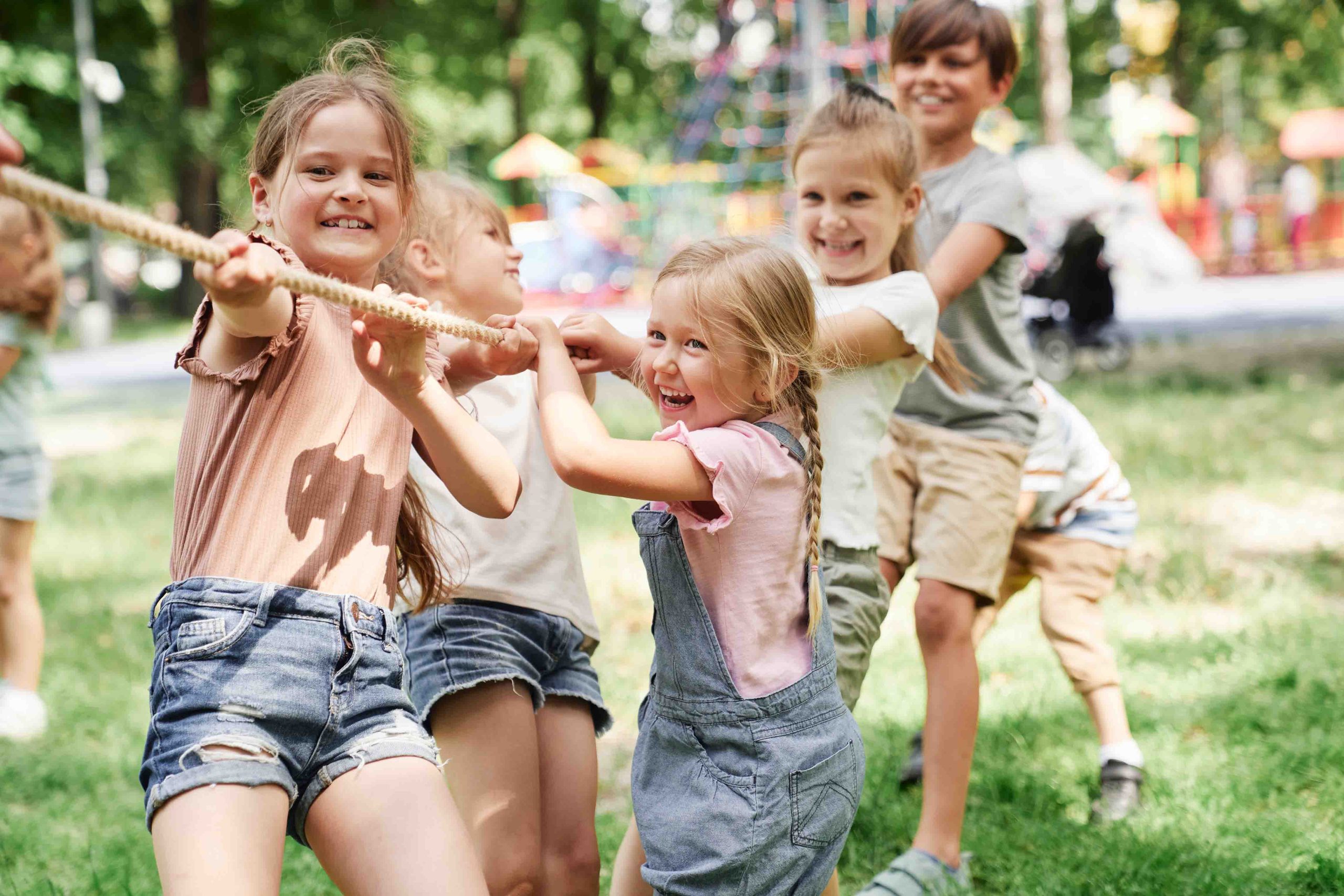Childhood trauma, defined as significant experiences that deeply affected us during our early years, doesn’t just fade away. It leaves lasting impressions that influence our mindset as we grow up. These experiences not only leave immediate scars but also imprint evolving core beliefs that persist into adulthood. They shape the way we perceive ourselves, others, and the world at large. Childhood trauma can affect anyone, transcending demographics. However, with intentional effort and support, it is possible to overcome these challenging experiences and embark on a journey of healing and self-discovery.
What constitutes Childhood trauma and when does it leave its mark?
Childhood trauma includes a diversity of highly emotional experiences that affect an individual during the stages of childhood and adolescence development. Trauma is often popularly associated with near-death experiences, accidents, terrorism, wartime situations, and natural disasters. However, childhood trauma can also include other emotional experiences such as neglect, physical, emotional, or sexual abuse, exposure to violence, or the sudden loss of a loved one. The impact of childhood trauma is extensive, affecting cognitive, emotional, and physical development and often establishing the groundwork for long-term psychological effects in adulthood.
A key to identifying whether something in childhood has affected you may lie in discovering if you hold core beliefs about yourself, the world, or others that do not align with the «rational» evidence available but nonetheless generate significant emotional intensity.
The Illusion of a Happy Childhood
It is interesting to observe the paradox of childhood trauma. At times, some individuals find it challenging to recognize emotional neglect and may perceive their early years as if they had a happy childhood. This happens when obvious abuse is not evident, giving the impression that everything is good enough. The thing is, we might not realize that we missed out on important emotional support. Emotional trauma, therefore, becomes one of the most challenging to address, as often we are not aware of the deficiencies, such as the lack of emotional validation. It is difficult for us to understand that emotional neglect took place if we didn’t even have the opportunity to learn and recognize our emotional needs.

Symptoms of Childhood Trauma
Figuring out the signs of childhood trauma is key to understanding how it affects individuals. Each person experiences its influence differently; some exhibit all the symptoms, while others show a combination of them. The most common indicators are as follows:
- Emotional ups and downs: Confronting emotions is sometimes experienced as a roller coaster, with intense feelings of sadness, anxiety, anger, guilt, and/or shame, as well as joy. In fact, many individuals with childhood trauma often come to the first session wondering if they suffer from bipolar disorder.
- Cognitive beliefs: Being self-critical or holding the belief that we are not worthy of love, success, or happiness. This can manifest as difficulties in connecting with others, feeling inferior, or simply not paying much attention to oneself. "I'm not enough," "I'm unlovable," or "I have to be good" are some examples.
- Interpersonal challenges: Some people experience distrust when emotionally approaching others, or, at the opposite extreme, have difficulty setting boundaries with certain individuals due to a lack of tools to identify warning signs.
- Behavioural patterns: Sometimes, it may involve doing things that are not good for us, engaging in risky behaviours, acting impulsively, or even avoiding places or situations that bring back emotions related to our traumas.
- Physical symptoms: Our body can also provide some clues, such as changes in sleep, frequent health problems, or changes in appetite and eating habits.
Where Do Trauma Responses Manifest?
Identifying responses to childhood trauma entails recognizing how the fight, flight, freeze, and fawn instincts manifest. These innate reactions can be triggered in various life situations, influencing both behaviour and emotional well-being. Emotional flashbacks are also a symptom of childhood trauma.
Recognizing Childhood Trauma Responses:
1. Fight, Flight, Freeze, Fawn Responses:
Recognizing these instinctual responses: facing the situation (fight), fleeing from situations (flight), becoming paralysed (freeze), or adopting a people-pleasing or appeasing stance (fawn) can indicate the activation of childhood trauma triggers.
2. Emotional Flashbacks:
These episodes are intense emotional experiences in which the same emotional intensity as in the past event is relived. Recognizing emotional flashbacks involves identifying sudden and overwhelming feelings triggered by a current situation, which can be very intense and distressing. Thoughts of self-criticism may be experienced, along with intense feelings of shame, guilt, sadness, emptiness, or hopelessness. The emotional intensity is perceived as disproportionate to the event that triggers it. Emotional flashbacks, often triggered by returning to past environments such as family visits, can be overwhelming. Coping strategies include recognizing triggers, practicing grounding techniques, using self-talk statements, journaling, physical activity, creative expression, and setting boundaries. Additionally, it may also be beneficial to connect with our social network, maintain self-care rituals, employ cognitive-behavioural and emotional validation and acceptance techniques, and seeking professional help if necessary.

What happens during trauma-focused therapy for childhood trauma?
The treatment plan is not one-size-fits-all but is an individualized plan agreed upon between the individual and the therapist. As a psychologist, my primary goal is to understand the person’s needs and expectations and incorporate them into the treatment plan. Childhood trauma is not something we can address unless we are fully equipped and prepared, and the pace depends on each individual. In some cases, we may first work on addressing trauma-based triggers, while with other people, we may focus on establishing a routine and addressing unmet basic needs first. If it were a fire, we would have to extinguish it first and then discover what caused it.
Here is an example of a possible treatment plan:
- First session: We may discuss the reasons you think you could benefit from therapy. I will provide explanations about your symptoms and some exercises for you to apply in your daily life if you wish.
- Feeling safe and secure: We may work on techniques to stay connected to the present moment and strategies to manage intense emotions, preparing for when they arise. Trust in the therapeutic bond is also crucial. The idea is to build a strong relationship and keep communication open so you can feel supported on our journey together. Therapy should be a safe space where you never feel judged.
- Basic information: We may talk about symptoms, how trauma can affect your life, emotions, and beliefs you have about yourself, and what kind of progress we can expect in therapy.
- Delving into trauma: Only when you are ready and being very respectful of each person's pace, we may be able to talk about the history of trauma, process those memories (or emotions if you don't remember some parts of your past), and address any core beliefs that you may have. Our plan will involve a slow exposure to emotions related to trauma, taking solid, safe, and steady steps, always at your own pace.
- Emotional skills and coping strategies: You will also learn techniques to manage those intense feelings related to trauma. These are emotional coping strategies for difficult moments.
- Relationship patterns: It is common for trauma to affect the way we relate to others. We can also analyse these patterns in order to determine if there is something we need to work on regarding forming healthy and safe connections.
- Self-discovery: It's easy not to have a clear idea about your own interests or your identity when you have experienced childhood trauma. We will work on building a more positive and empowered "self." We can also explore personal values and set achievable goals.
- EMDR work: If you are interested, Eye Movement Desensitization and Reprocessing (EMDR) is an effective tool for working on childhood trauma. Before starting, we will ensure you have all the necessary coping skills.
- Conclusion: As we approach the end of our sessions, we will develop a relapse prevention plan and explore the next steps on your journey.
- Follow-up: Continuous adjustments will be made to the treatment plan as necessary. Your feedback is crucial for you to feel heard and supported.

Recognizing when to seek help
Seeking help, whether from understanding friends, supportive family, or mental health professionals, demonstrates strength, a genuine desire to change and it also represents a significant step toward healing and personal discovery. Part of a trauma response is to try to resolve things on our own or feel undeserving of support. Asking for help on the path to healing is crucial for effectively addressing the aftermath of childhood trauma.
If you are experiencing overwhelming feelings, your strategies and coping mechanisms are not having the results you expected, symptoms persist or intensify, or they begin to affect your daily functioning, whether at work, in relationships, or overall well-being, or if you find yourself socially withdrawing or experiencing feelings of isolation, it will mean you could benefit from extra support.
Remember, you are not alone in this journey, and there are resources available to support you in your process.
Helpful Self-Help Books
- "The Body Keeps the Score" by Bessel van der Kolk: This book explores the impact of trauma on both the body and mind, offering insights into effective therapeutic approaches and self-care practices.
- "Complex PTSD: From Surviving to Thriving" by Pete Walker: Walker provides a comprehensive guide for understanding and healing from Complex PTSD, offering practical strategies for self-help and personal growth.
- “The Book You Wish Your Parents Had Read (and Your Children Will Be Glad That You Did)” by Philippa Perry
- “Adult Children of Emotionally Immature Parents: How to Heal from Distant, Rejecting, Or Self-Involved Parents” by Lindsay C. Gibson
- "The Courage to Heal" by Ellen Bass and Laura Davis: Focused on survivors of childhood sexual abuse, this book provides a compassionate guide to healing, with exercises and insights to aid in the recovery process
- "Running on Empty" by Jonice Webb: Webb delves into the concept of Emotional Neglect, offering readers a path to recognize and overcome the impact of a childhood marked by emotional absence.
- "Self-Compassion: The Proven Power of Being Kind to Yourself" by Kristin Neff: Self compassion does not mean to feel sorry about yourself, but treating ourselves with kindness as we would treat a loved one. Neff explores the transformative power of self-compassion, providing practical tools to break free from self-critical patterns often rooted in childhood trauma.

The process of unlearning core beliefs developed from childhood trauma is a nuanced and individualized journey. It requires commitment, patience, and often the support of mental health professionals. In addition to professional guidance, self-help books can serve as valuable resources, offering insights and strategies for individuals navigating the path toward healing and self-discovery. Recognizing and addressing fight, flight, freeze, fawn responses, as well as emotional flashbacks, are integral steps in unravelling the tightly fabric of evolving core beliefs, paving the way for a more positive and fulfilling adulthood.
Breaking free from the lasting effects of childhood trauma is possible. It requires finding the correct formula that works for you, including self-reflection, external support, and a commitment to navigating the intricate terrain of healing and self-discovery.
About the author:
Marta Gray is a licenced Psychologist working at Sinews. She has a flexible approach combining different scientifically proven methods (Acceptance and commitment Therapy, CBT, EMDR) depending on the patient’s needs. Her main field of expertise is working with adults and she is specially interested in complex trauma, anxiety disorders, emotional deregulation and couple’s therapy.
Division of Psychology, Psychotherapy and Coaching
Clinical and General Health Psychologist
Adults and couples
Languages: English and Spanish

